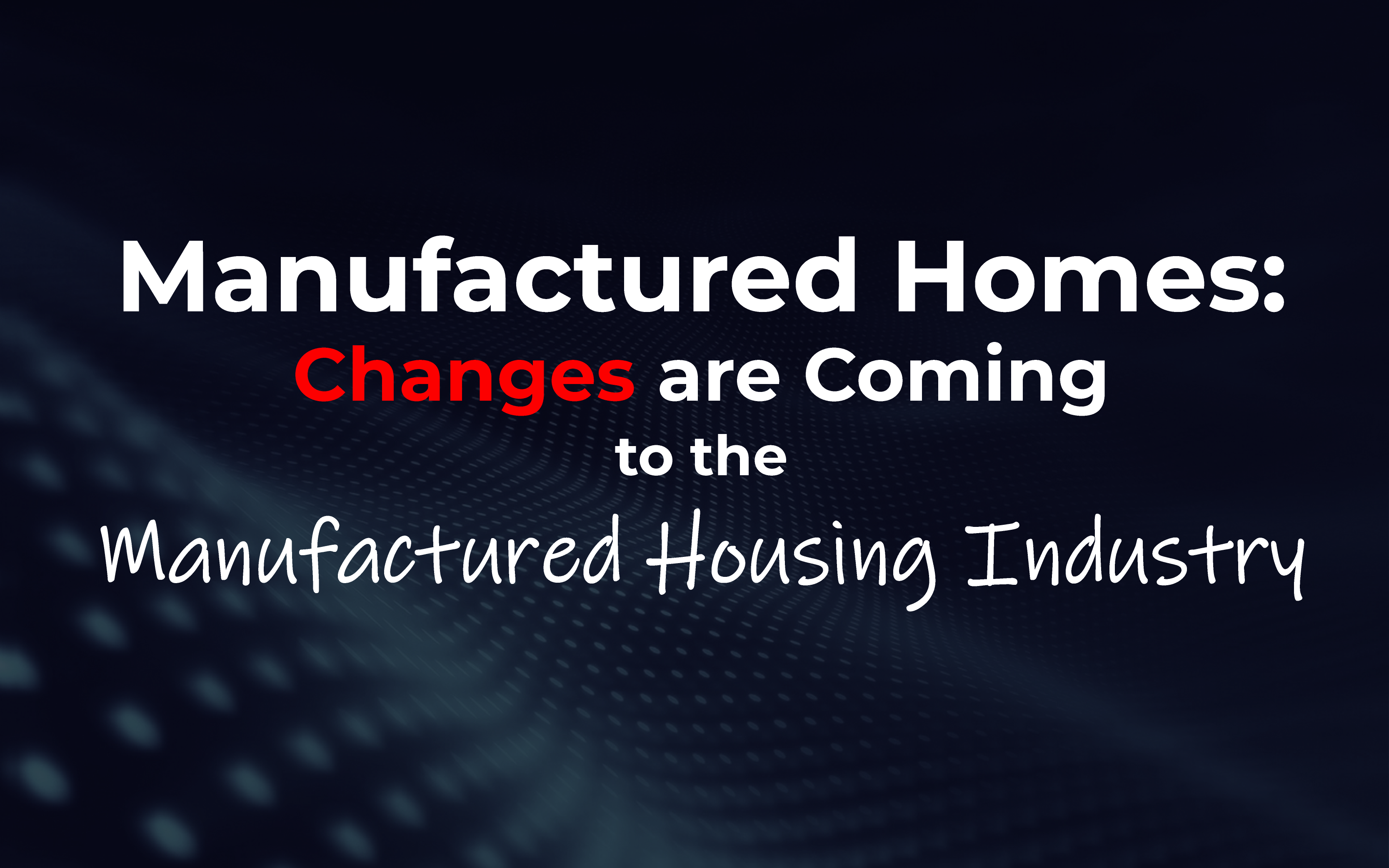Changes Are Coming to the Manufactured Housing Industry
January 4, 2019

Manufactured Housing Market Outlook 2019: Changes That Will Impact the Industry
At the beginning of each year, nothing is more hotly debated across the manufactured housing industry than the trends and changes expected to transform this sector. Considering that a growing number of investors add manufactured home loan products to their portfolios and numerous home buyers choose manufactured homes over conventional site-built construction, let’s take a look at the most important changes projected to impact the manufactured housing industry in 2019.
The Bill S.2155 Remains in EffectAlthough the CFPB still needs to alter its regulations in order to be consistent with the bill S.2155, it has already revised the Loan Originator Rule and Home Ownership and Equity Protection Act Rule, and incorporated the legislative changes of the amended law. According to the revised rules, the manufactured home sellers and retailers that provide general financial information but aren’t engaged in manufactured home financing cannot be considered loan originators. As a result, the CFPB cannot pursue administrative action against the sellers and retailers that provide customers with some assistance during the manufactured home loan process.
New Efforts Will Be Made to Develop a Sustainable Secondary Market for Manufactured Home Financing
Insufficient information and lack of access to manufactured home financing options are two negative factors that still affect the manufactured housing industry. To offset their impact, well-established industry participants, such as MHI, FHFA, CFPB and specialized lenders, will continue to develop buyer education programs and bring more financing solutions to the manufactured housing market. Considering that the secondary market for manufactured home loans is still limited, the success in meeting these objectives should have a notable positive effect on the entire industry.
New Manufactured Home Construction and Safety Standards Will Be Developed
According to newly proposed regulations, HUD would be required to amend its existing construction and safety standards for manufactured homes in order to ensure consistency with the latest EPA’s regulations. As an example, the formaldehyde standards for the composite wood products typically used in manufactured homes would have to be updated according to EPA’s section 601 of the Toxic Substances Control Act.
Additionally, HUD is preparing to issue new regulations intended to change the current AFFH rule. Since the proposed amendments include “actions that increase housing choice”, MHI has suggested that HUD should also revise its zoning directives, which currently restrict or eliminate manufactured housing from the affordable housing stock.
The DOE Will Focus on New Energy Conservation Standards for Manufactured Homes
In addition to working on new energy conservation measures for manufactured housing, the DOE intends to develop a new regulatory framework for energy standards that would apply to this housing sector. As a precautionary measure, MHI will continue to actively engage with the DOE and HUD to ensure that the future energy standards won’t impose excessive compliance requirements.
Because excessive requirements often generate higher manufacturing costs, they might hinder the industry’s ability to offer as affordable manufactured housing to consumers that they are accustomed to, eliminating one of the top reasons many home buyers choose a manufactured home.
For instance, the energy conservation standards for mobile home gas furnaces that are still in the “proposed rule stage” would increase the sales price of new manufactured homes, as well as negatively impact current manufactured home owners; however, when comparing the quality and cost to that of a site-built home, a manufactured home is still by far more affordable.
When it comes to the changes expected to impact the manufactured housing industry this year, the most important aspect remains the value they bring to homeowners and investors alike. With all the involvement of the industry’s key players, the new manufactured homes will be more sustainable and higher-quality, enhancing the quality of life in various ways.
Therefore, the new manufactured homes that comply with the latest construction, safety and energy requirements won’t be just comparable to conventional site-built construction; they’ll be better. This is one of the reasons why the manufactured housing industry has become a viable investment alternative for everyone, including manufactured home owners, community operators, lenders, dealers and realtors.
